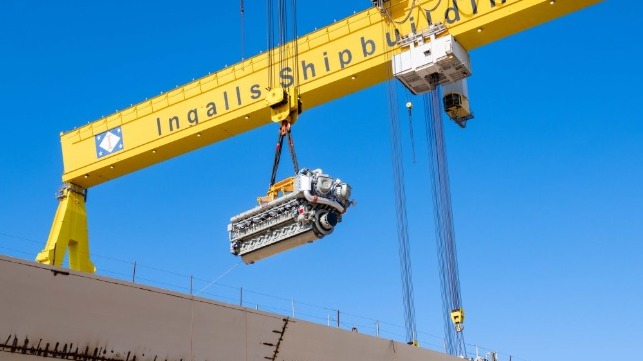Ukraine Conflict Highlights Need for Domestic Defense Manufacturing

Russia’s invasion of Ukraine has revealed the challenges of sustaining conventional military forces far from home against an opponent enjoying the home-field advantage. Moscow’s failure to adequately secure its supply lines reminds us of an important lesson that seems to be forgotten in the post-Cold War era: wars between conventional militaries produce significant attrition and require the industrial capacity to quickly replace and surge new equipment to the frontlines.
American industrial and military leaders once understood this reality. In World War II and the Cold War, the U.S. enjoyed the industrial capacity and supporting workforce to quickly surge ships, aircraft, and armored vehicles to the battlefield and replace our losses in good order. This provided military planners with a cushion should a conflict exceed a few weeks.
The United States has confronted a very different reality after 9/11. Our manufacturing capacity and workforce have shrunk dramatically in the past two decades. American dependency on overseas components for critical military equipment is on the rise. And the Middle Eastern counterinsurgencies that defined 21st-century warfare have not required the type of surge capacity indicative of conventional, peer-to-peer conflict.
The United States can no longer assume the hallmarks of its military doctrine over the past thirty years will remain valid. Our air and sea dominance, technological superiority, and relatively low attrition for advanced hardware during a conflict can no longer be assumed. Our industrial base needs the capacity to surge additional ships, aircraft, and vehicles into a combat zone on relatively short notice and continue to do so for a considerable period.
Unfortunately, policy decisions across administrations of both parties have made it difficult for our industrial base to take on this challenge. Particularly in the lower tiers of the supply chain, the lack of budget stability, failure of Washington to maintain adequate spending on our military, and increased reliance on foreign sources make it difficult to retain skilled workers, invest in sophisticated physical plants, and spur innovation.
In 2018, the Defense Department released the annual “Industrial Capabilities Report” to Congress that investigated the health of the U.S. defense industrial base. It found that nearly 300 critical gaps existed across the industrial base, including dangerous dependencies on foreign suppliers and essential skills gaps in the workforce. The report identified defense budget sequestration, a rigid acquisition process, and a lack of surety in defense procurement as reasons for this troubling situation. In the second and lower tiers of the industrial base, smaller suppliers are particularly hard hit.
To protect the American people and our national interests, the U.S. must have the industrial capacity to endure prolonged conflict and ensure ultimate victory. Congress and the Executive Branch must provide defense spending that is stable, transparent, and adequate for the entire defense industrial base, not just the largest contractors so that the United States can ultimately prevail in any future conflict, no matter the length or difficulty.
George Whittier is the Chief Executive Officer of Fairbanks Morse Defense in Beloit, Wisconsin.
The opinions expressed herein are the author's and not necessarily those of The Maritime Executive.

